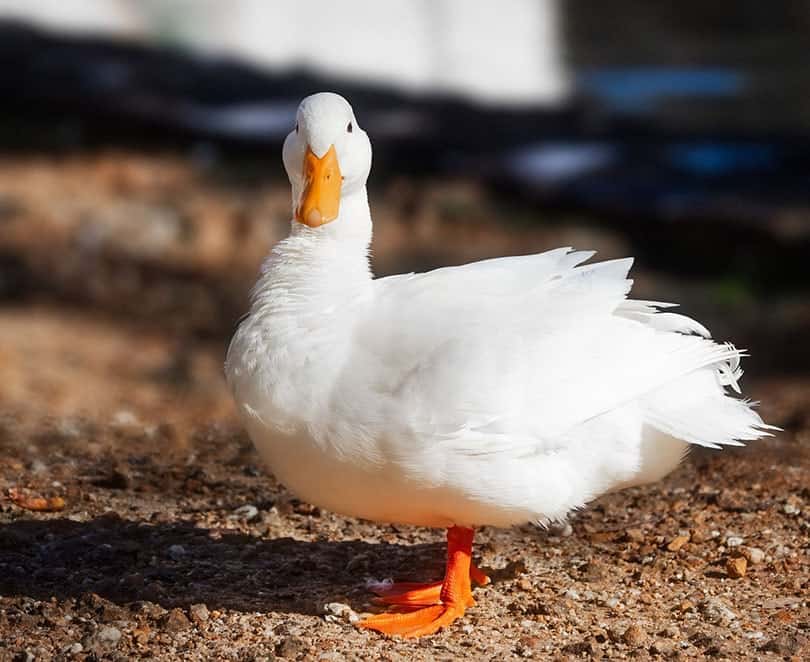Ducks are very hardy birds. They are easy to breed, grow quickly, and resist disease well. Thus, the duck is a very profitable bird species for producers, because it is inexpensive, requires basic facilities, and lays a lot of eggs. Another important characteristic of ducks is the quality of their flesh and its foie gras, which delights many gourmets—hence the interest in breeding large species of ducks.
In this article, we present eight of the largest specimens in the world.

What Is Considered a Big Duck?
There are no international classification standards for large duck breeds. However, the British Waterfowl Association (BWA) defines heavy ducks as females weighing at least seven pounds and males (drakes) weighing at least eight pounds as adults. These standards are also accepted in North America.
Let’s take a closer look at the eight largest duck breeds.
The 8 Largest Duck Breeds
1. Muscovy

The Muscovy duck is a domestic duck native to South America. This heavy duck (male can easily reach ten pounds) tames very easily and does not require extensive maintenance. It is particularly recognizable by its featherless head with red fleshy growths. In Europe and France, this duck appeared in backyards a very long time ago, during the 16th century. Domesticated by the peoples of America, it was brought to Europe by the Spaniards. Its ancestor would be the musk duck, an American wild duck. Like the latter, the Muscovy duck gives off a musky odor.
2. Aylesbury
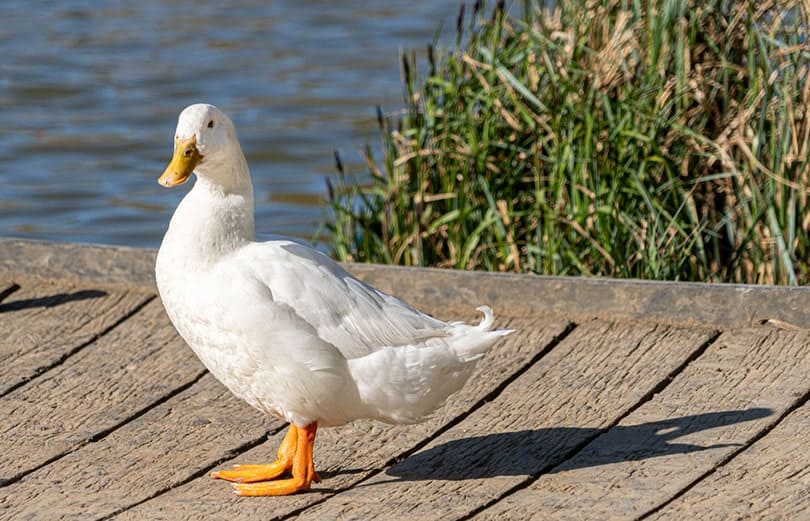
The Aylesbury duck is a domestic duck of English origin, raised primarily for its meat. Their flesh is moist, tender, and has a robust flavor. Besides, it only takes seven to nine weeks for baby ducks to reach the standard butcher’s weight of five pounds.
Thus, it is quite a large duck, with white plumage, a pink beak, and orange feet and legs. However, little is known about the breed’s exact origins, but duck breeding became popular in Aylesbury, Buckinghamshire, during the 18th century. Indeed, the demand for white feathers was increasingly important to supply the pillow industry. Thus, throughout the 19th century, the ducks in the region were selected on their size, morphology, and color, to give the breed known today as the Aylesbury duck.
3. Silver Appleyard
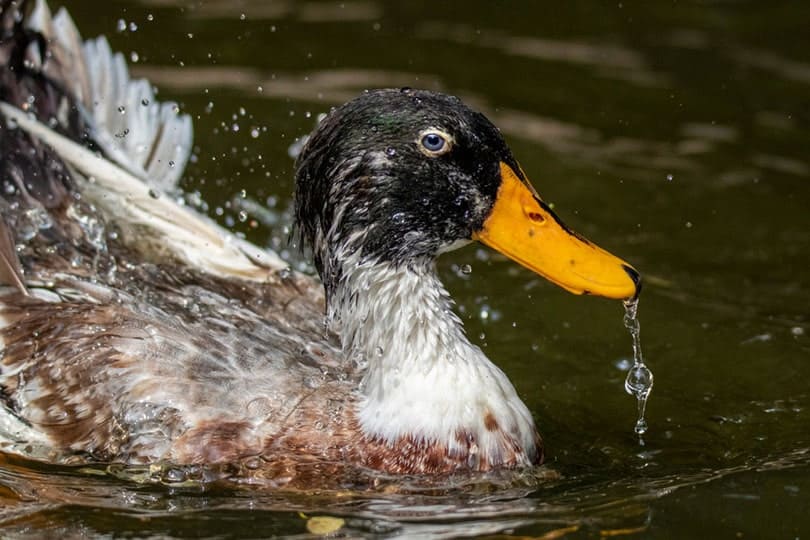
The Silver Appleyard is a very stout duck, as well as one of the best layers in the heavyweight category: the female can lay between 220 and 265 large eggs per year! It is also a very rare breed of domestic duck native to England.
Indeed, this robust duck was selected in the 1930s by a poultry breeder named Reginald Appleyard. His goal was to create a breed renowned for its flesh and eggs as well as for its beauty.
A miniature variant, simply called Miniature Appleyard, was also created in the 1980s and first exhibited in 1987. It was recognized as the official British standard in 1997.
4. Saxony
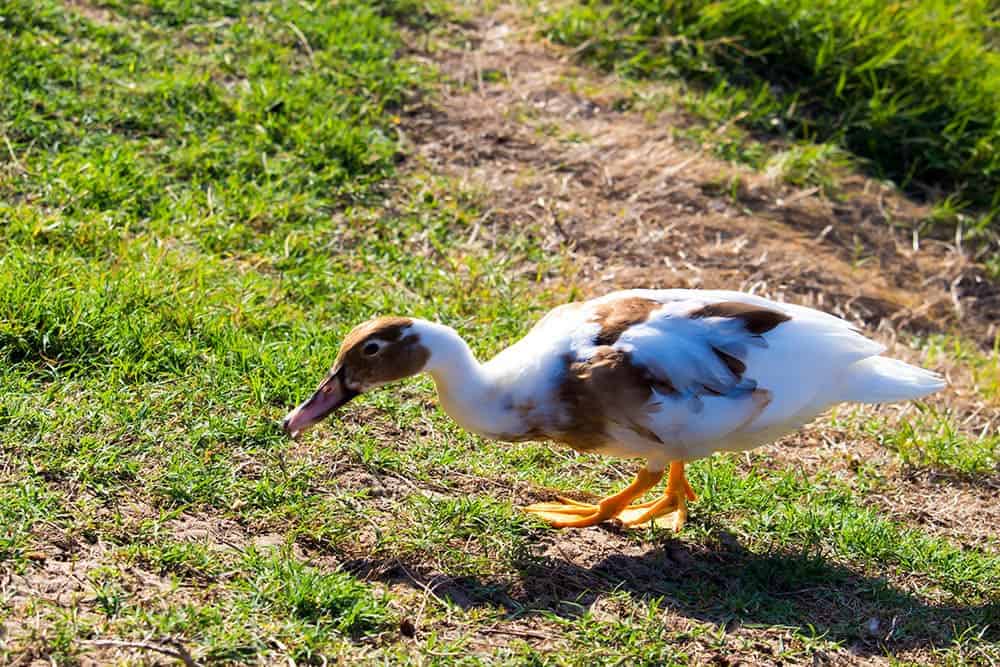
The Saxony duck originates from the Saxony region in Germany. This large duck, considered a heavy breed, has many attractive characteristics. By its shapes, the designs of its plumage, and its build, it looks very much like the Rouen duck. Its pink and bluish colors make it a magnificent ornamental duck, while foodies can appreciate it for its delicious flesh. In addition, it is prolific and suitable for reproduction from the first year.
5. Blue Swedish
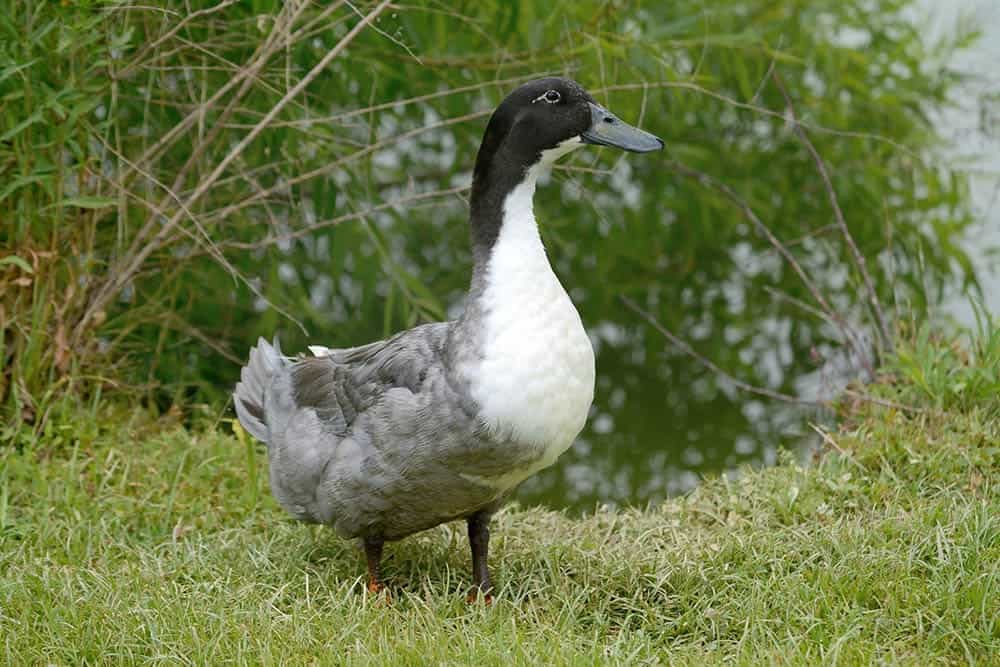
The Blue Swedish is a breed of domestic duck that originated in Sweden and was primarily bred for its flesh. These stout and magnificent birds have a characteristic appearance with their beautiful black head, white bib, and lovely light blue body. This blue color apparently makes them difficult to spot by predators. However, they are pretty noisy birds: the ducks cry loudly while the males have a shrill cry, which can be intensified when fighting for a female. Moreover, although blue is the only officially recognized color, the Swedish duck will give a small proportion of black or silver descendants.
6. Rouen
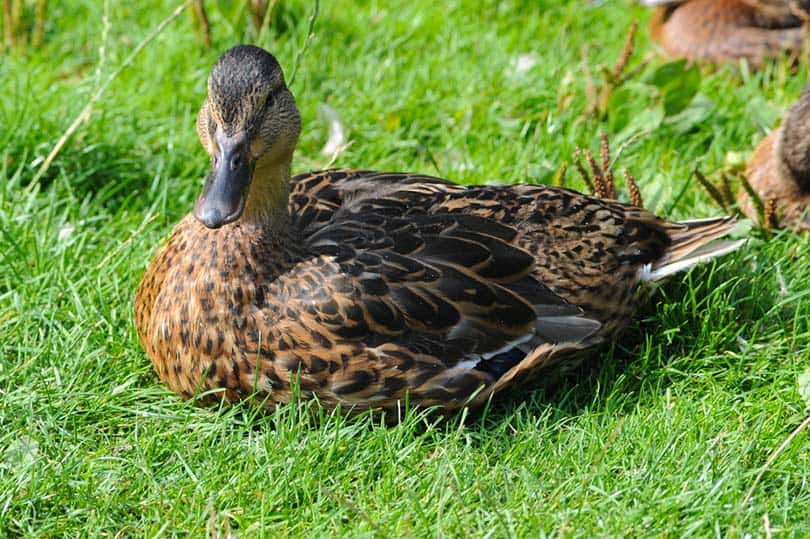
As its name suggests, the Rouen originates from the city of the same name, famous for the Notre Dame Cathedral. This friendly duck is rather plump and imposing, but it remains majestic. Due to its large size, the Rouen duck is renowned for making an excellent table bird (especially when roasted). However, it grows slowly; indeed, it takes more than a year to reach its adult size.
The ducks have plumage ranging from brown to black with green tints, while the males have a magnificent iridescent green head with a black, purple body. In addition, the Rouen duck is relatively easy to tame, and it looks slightly lazy. They are rather quiet birds.
7. Cayuga
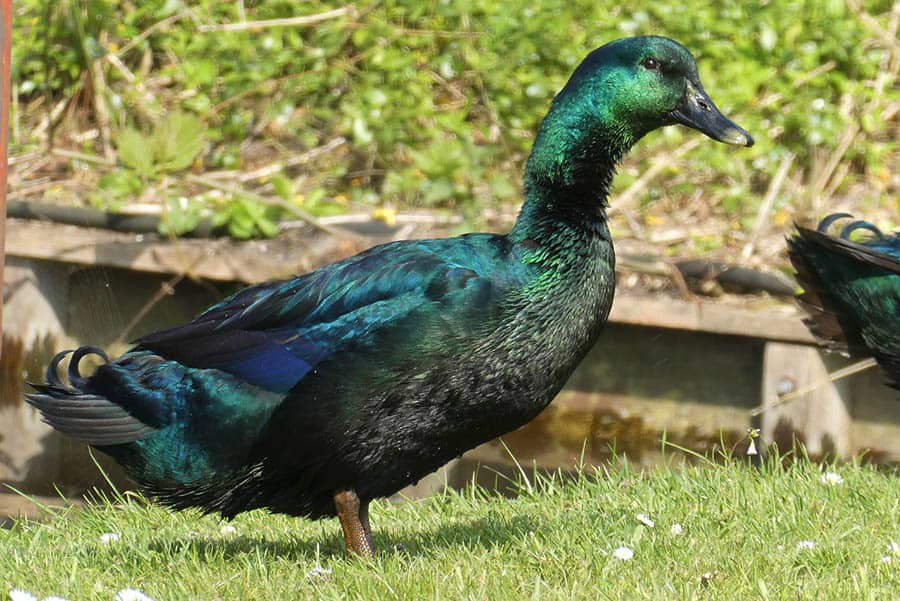
This breed owes its name to Cayuga Lake, located west of New York, United States. It results from a cross between the black wild duck and the Rouen duck. Drakes weigh up to eight pounds and ducks seven pounds. They are also hardy and quiet birds with good temperaments. Moreover, these heavy ducks are distinguished by the striking beauty of their black plumage. In the sun, their plumage shines with a magnificent green glow. However, ducks do not stay black all their life, and they often develop white feathers as they age.
8. Pekin

The Pekin is a large duck breed with white feathers and a yellow beak. However, the Jumbo Pekin breed is approximately 15% larger than standard white Pekins and weighs about ten to thirteen pounds. Although their place of origin is often disputed, most people agree that it was probably somewhere in Southeast Asia. They are calm and a little nervous, but they make excellent pets because of their unique personalities and longevity. Pekin ducks are easier to breed than most other breeds of domestic ducks due to their strong immune systems and ability to survive extreme conditions.
Also, through selective breeding, these birds produce larger eggs and more meat than most other ducks. So, over the years, the Pekin has become one of the most common production ducks in the world.

Final Thoughts
Large duck breeds have many admirers, whether for their majestic appearance or for the quality of their eggs or meat. The largest specimens in the world are in fact sought after as much by bird lovers as by producers of quality poultry. We hope that our exhaustive list has enabled you to learn a little more about these magnificent and grandiose birds!
Featured Image Credit: jeanvdmeulen, Pixabay
